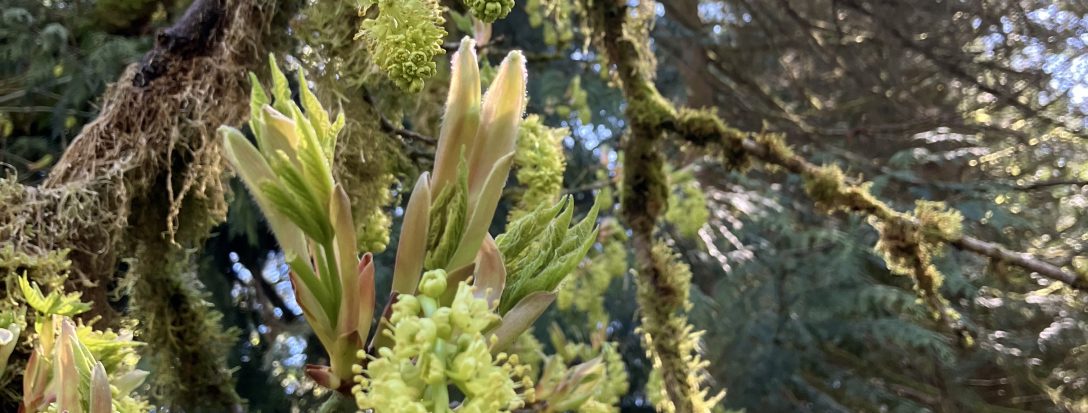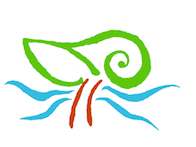
Forest Restoration is crucial to the survival of our ecosystem here in Western Washington. That ecology revolves around an intricate balance between water and soil. The original symbol for the land at EEC Forest Stewardship incorporates our salmon bearing stream, bridge, and plant life which provide food, medicine, and material. From sprouts to the spiral of life, these symbols combine to tell the story of regenerative design. Stewardship grows ever outward, coaxed along by cultivation, both on the landscape and in self. This restoration happens slowly, over time, with many setbacks along the way. In over ten years of following this vision, a plan of restorative regeneration stretches young branches towards the sky.
The EEC Forest Stewardship emblem is an insect, a smaller creature of the landscape, which is often overlooked, and underappreciated. Insects are a great biological indicator of health in an ecosystem. They remind us of how seemingly insignificant parts are critical to maintaining balance in a complicated form- an ecosystem. Taking time to see the minute details provides a strong foundation for future growth of living systems. The length of observation never ends, for entropy endures, and our hill farm will change significantly in the next decade. The 2024 Critical Drought Warning was announced in April-Springtime, when we should have a few inches of rain in a week and get less than one. Still in observing for a decade, we planned thus, and have continued to establish drought resistance across. the landscape here at EEC. Through community effort, personal determination, and lots of love, a small patch of cultivation happens collectively, ensuring the cooperation between all parts of the whole.
Bridging that landscape through collective learning is this forest land’s calling. Led by the visions of Elizabeth Esco Crain, the forest at EEC Forest Stewardship is returning, one acre at a time. Through continued holistic practice and community learning, more trees will be planted, and more backyard forests will appear. From fruit trees to evergreen giants, all canopy is helping to reforest a landscape that should have intact canopy, to ensure the retention of rain waters on the landscape and nutrients in the soil. Too much land has been cleared, and we’re loosing our soil and water.
Small land owners* are not always aware of how their own acreage plays a role in the now scattered patchwork of forests left in the developed parts of our state, which continually degrade with each passing day. Our county has a Forest Stewardship program to help land owners learn about forest management and how to develop their landscape for the future, weather it be timber management with logging and replanting, or cultivating young trees that will one day stand as old growth. The great news is, more and more people are choosing to let the forests grow once again.
That’s where EEC Forest Stewardship comes in. This land is being cultivated for long term regenerative growth, with a special focus on food and medicine production, including a selection of new plantings within the landscape of this property. Where there were once fields with only marginal pasture, we’re establishing nut trees and under story shrubs to return layers of canopy to temperate rain-forest. Through this long term restoration, EEC Forest Stewardship hopes to encourage other land stewards to do the same.
*EEC recognizes that Indigenous People speaking Southern Lushootseed were the original inhabitants of the now colonized Puget Lowlands. “Owners” implies United States of America government “deeds”, which perpetuate colonial assimilation. George Washington, for whom our state is named, was an original supporter of this concept and slave owner. Our intention is to put the “property” into trust with The Snoqualmie Tribe. This vision includes forming a trust in which deed of ownership is transferred into tribal care with a 75 year lease for Leafhopper Farm LLC to continue operation as restoration landscape with food sovereignty focused adaptation and affordable housing.


